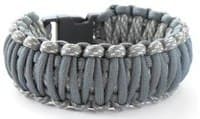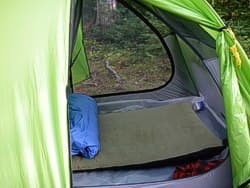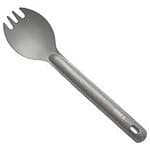Gear for Camping: Silly or Serious?
One of the joys of being a writer is that I get to try a lot of new stuff. Some products are genuinely useful; others are simply silly. Still, one man's trash is another's treasure, and admittedly, I judge them from the view of a wilderness paddler where everything must earn it's weight, bulk and utility on a canoe trip. Here are some things that I consider silly. Please feel free to sling barbs at my choices:
SURVIVAL BRACELET

These are woven from parachute cord. The idea is that if you're lost in the wilderness you can unravel the cord and use it to rig a shelter etc. When I was in my twenties I was lost for three days in the western Oregon woods. I had a water bottle, knife, matches, compass, salami sandwich and a mental map of the area-but no cord. It was the compass and mental map that saved the day. Parachute cord will be useful to a lost camper who is highly skilled. But it's a non-starter for an armchair survivalist who doesn't know what he's doing.
WOOD BURNING STOVE THAT CHARGES PHONES
This twig-burning stove uses heat energy to charge small items like cell phones and iPods. If you've ever used a high capacity solar charger, you know that it can take hours to fully charge a device. Constantly feeding a small stove with twigs gets old fast. I see that there's a new cooking pot that doubles as a solar charger. My, what will the engineers who don't camp out think up next?
HALF A SLEEPING BAG

The top of the bag is insulated; the bottom, which is designed to accept a foam sleeping pad, isn't. This saves some weight and bulk. But to reap the benefits one must sleep inside the bag, not use it as a simple cover. On warm nights I nix the sleeping bag and sleep directly on my sleeping pad (which is covered with cool, porous fabric), and when the night cools off I use my open sleeping bag-or a portion of it-as a blanket. I like "choices"-and sleeping bags with non-insulated bottoms to provide them.
POTS WITH HEAT-EFFICIENT BOTTOMS
These pots have a steel, sponge-like ring welded to the bottom. The ring distributes the heat more efficiently than a bare pot bottom. It works, but the ring adds weight and bulk and it makes the pot hard to pack and hard to clean. If you wash the pot then set it on the ground, dirt and debris will stick to the ring openings and clog them. And be careful, the ring edges can be sharp! The insulated cozy system I suggest in my books better conserves heat and unlike the metal ring, it keeps food hot long enough for seconds. Sometimes, good old ideas are "good ideas".
SPORK

Half spoon, half fork; it doesn't work for me. When I want a spoon I want a spoon; when I want a fork I want a fork. Putting them together in one utensil makes eating awkward and saves maybe half-an-ounce. The Princess and the pea might feel the weight difference on a long portage, but not me!
YOKE WITH CURVED SHOULDER PADS
If you want to know what yoke works best, try this experiment: Outfit several heavy tripping canoes with different style yokes then go on some long portages. Observe which canoes are always carried first, and which are left for last. I've repeated this experiment many times over the years and the jury is in. The "Minnesota Yoke", which consists of a curved ash bar and two thick, foam-filled pads like those made by "Superior Portage Pads" (superiorportagepads.webs.com) and Bourquin Boats (www.bourquin.wcha.org), rules the day. Other yokes can't compare. For example, one popular yoke has curved pads that fit your shoulders. Sounds elegant until you carry a heavy canoe up or down hill. Then the curved pads dig into your shoulders. A bad yoke will work on a lightweight canoe, but it's torture on a heavy one. Sometimes, tradition gets it right!
TENT FOOTPRINT
This is a waterproof nylon copy of your tent floor. It attaches with Velcro, clips or whatever to the bottom of your tent. Supposedly, it saves wear on the tent floor. Yeah, and in a heavy rain, flowing groundwater can become trapped between the footprint and floor and be pressure wicked by body weight into the sleeping compartment. You'll really have a sponge party! An interior groundcloth that keeps trapped groundwater away from you, is a better plan!
Cliff Jacobson is a professional canoe guide and outfitter for the Science Museum of Minnesota, a wilderness canoeing consultant, and the author of more than a dozen top-selling books on camping and canoeing. www.cliffcanoe.com
Related Articles
This question is from imsealin – they asked how long should a kayak be for sea kayaking, and can it be…
One of the considerations for deciding which type of material you want your kayak to be made from…
I've been busy lately rearranging my cooking essentials: the little tools that I can't do without. Of…
A discussion on the use of a compass from a kayaking standpoint begins with basic compass savvy and then…



